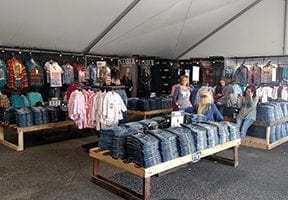Coupon or discount codes your customers enter during the ecommerce checkout process can help your business monitor and measure marketing and advertising effectiveness and make better promotional decisions.
For a professional marketer, measuring a marketing campaign should be one of the first considerations with every new advertising or promotional plan. Without measurement, you won’t really know what worked and you cannot properly justify continued investment.
Without measurement you may find your business in John Wanamaker’s classic dilemma: “Half the money I spend on advertising is wasted; the trouble is I don’t know which half.”
One way to monitor (or at least benchmark) how well your marketing promotions are working is to use coupon or discount codes. Shoppers are familiar with coupons and entering online coupon codes. When you limit the distribution of a given coupon code to a specific promotion or marketing tactic you can measure that tactic.
Example Coupon Campaign
Imagine you own an online pet supply store that sells everything from leashes and puppy shampoo to 40-pounds bags of pet food and small packages of dog treats.
Your business is about to start a sale on dog treats, and your marketing team has decided to place banner ads on several websites, including dog training blogs, breeder sites, and pet travel sites.
For each site, your marketing team develops a specific coupon code that is logically connected to the banner ad content. A banner ad with the headline “Because you love to see her smile” might use the coupon code “MakeSmiles” on one website and “ForSmiles” on another.

When you associate a specific coupon code with a specific tactic or even a specific website, you can measure that tactic’s or website’s performance in the campaign.
In each case, when a shopper uses a coupon code, you will be able to identify the website where your customer found the coupon code.
Return on Ad Spend
Your business could use this data — the number and dollar value of sales each banner ad sent your store — to determine each ad’s return on advertising spend.
ROAS describes the ratio of dollars invested in a particular advertising tactic to the revenue or profit that it produced. ROAS can be expressed as a percentage or a dollar amount — as in the number of dollars returned to your business for each dollar invested.
The ROAS from a group of banner ads like those in the dog treat example would tell your business how much money each ad brought back to your ecommerce business and would measure the bottom-line success of the campaign. With this in mind, ROAS works best if your goal is to generate immediate profit.
Relative Comparison
Coupon codes may also be used to create relative comparisons or baselines when your goal is not necessarily immediate profit from individual sales.
A brick-and-click retailer in the Northwest United States wanted to identify which of several print publications would work best for an upcoming campaign. For a period of several months, this retailer ran coupon offers in each publication. The coupon codes were specific to each publication and allowed the retailer’s marketing team to identify the publications that appeared to have a relevant audience.
Later this retailer ran an ad series (intended to develop customer loyalty) in those print publications that had generated the most responses. This relative measurement did not necessarily mean these publications had produced the best ROAS, but the most engagement.
This same retailer will also use coupon codes as a way to test email messages. The retailer’s digital marketing group will develop two or three versions of email copy and headlines. Each email message has a specific coupon code that can be measured whether the shopper clicks a link in the email message or not.
On a recent campaign in November 2017, the retailer generated 486 sales valued at more than $50,000 in three days. Coupon code tests (across multiple media outlets) leading up to the sale helped optimize the campaign.
Measurement
Coupon codes are a good way to measure many forms of ecommerce marketing. They allow you to link a sale to a specific tactic, such as a banner ad, Pandora ad, television commercial, or even a print ad directly.
You will know with certainty if a particular tactic resulted in a specific sale or sales.
This sort of measurement, again, works best when your goal is to drive immediate sales, compare relative engagement for several ad vehicles, or conduct certain types of A/B marketing tests.
As you develop your company’s ecommerce marketing campaigns, build in ways to measure them. Collect performance information that will help you optimize the campaigns and make relatively better marketing choices.




